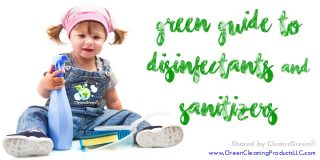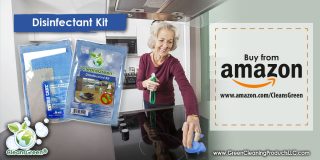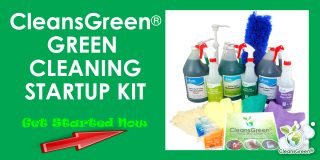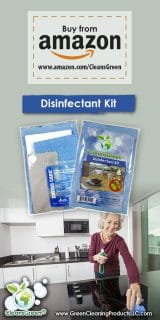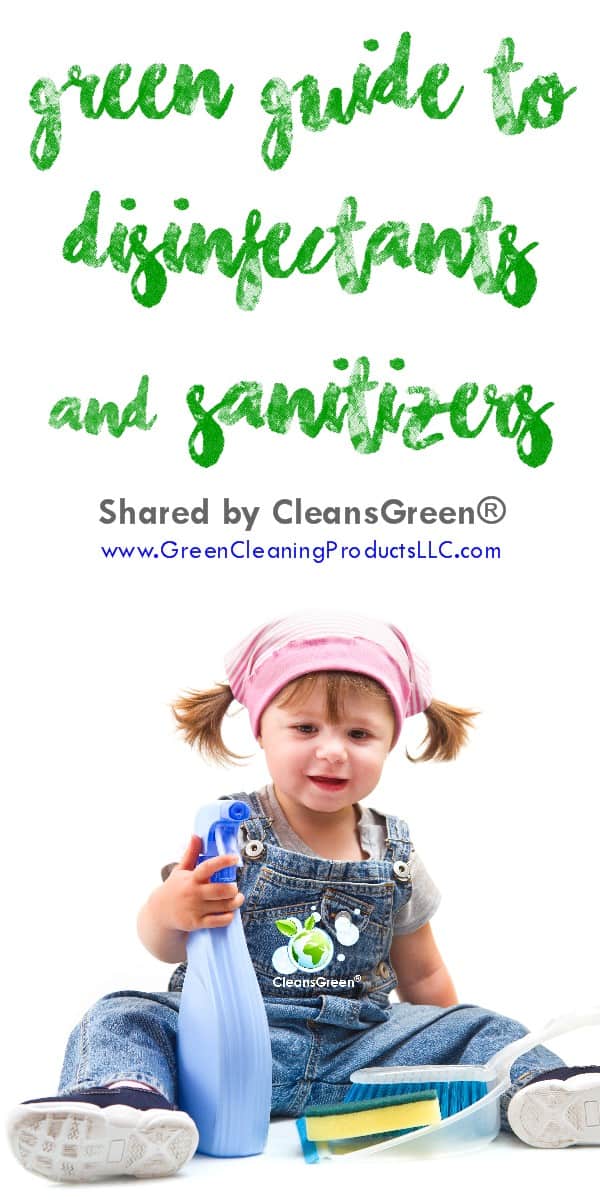On a daily basis it seems, a variety of sanitizers and disinfectants are used throughout the day. That said, those of us that are concerned about the safety of our cleaners wonder if it is better to use these specialty cleaners or focus primarily on the “old fashioned” soap and water method, especially if we are seeking a green cleaning products oriented solution.
In all cases, whether in the home or at the office, we seek a safe, clean and disease-free place to live and work. Understanding the power of the wives-tale, “an ounce of prevention is worth a pound of cure” we want to kill the few germs or microbes that may harm us, namely bacteria, viruses, fungi, mold, and parasites. At the same time it is important to realize that not all microbes are harmful to us as many microbes help our digestion, strengthen our immune system and defend against pathogens.
Sanitizers vs. Disinfectants
Although often used interchangeably, there is a difference between sanitizers and disinfectants.
Sanitizers will reduce, not kill, the occurrence and growth of bacteria, viruses and fungi. Disinfecting a surface, however, will “kill” the microscopic organisms as claimed on the label of a particular product.
For the geeks, the scientific “stuff”: The minimum effectiveness level required for today’s disinfectant is 100 percent kill of 6 log10 of an organism. Whereas a sanitizer is only required to reduce that 6 log10 down to 3 log10.
Interpreting this into real numbers: If we start with 1 million organisms on a surface then a disinfectant must kill 100 percent of them; zero left. A sanitizer, however, only reduces the number of organisms down to 1,000 and does nothing about virus and fungus microorganisms.
For the nongeeks, sanitizers are used to quickly reduce microorganisms to a level considered safe by public-health standards, and disinfectants when applied for the required dwell time will kill all of germs on hard, non-porous surfaces or objects. While many may believe otherwise, neither disinfectants nor sanitizers are designed to “clean”.
Since sanitizers and disinfectants are different they have been designed to be used for different applications. Generally it is the sanitizers that have been approved for food contact surfaces. Disinfection is appropriate for frequently touched surfaces and surfaces likely to harbor pathogens. Through different means, they both effect microorganisms in our world.
Standard cleaning practices focus on removing the “pests”, dirt and other organisms (as well as their “food source”) by washing them away. While soap and water method does not kill the germs, it can still be effective. In fact, at times a good simple cleaning may be sufficient, especially when combined with microfiber cleaning tools!
It is important to understand that since sanitizing does not make anti-viral claims, sanitizing offers no confidence of killing the flu or other viruses commonly found on surfaces.
Consider when a disinfectant might be required such as baby changing tables in a daycare versus a sanitizer such as cleaning toys, high chairs and other surfaces that may be found by a child’s mouth.
It is important to understand when you should use a cleaning agent, a sanitizer or a disinfectant based on what you are doing and what you are cleaning. Disinfectants are often overused when sanitizers or cleaning will do the trick. Be smart avoid a situation of Drowning in Disinfectant Wipes as so many do. There are many reasons why, including the six identified by Green Cleaning Products LLC. Remember, not all microorganisms are bad, and we can overdo it when it comes to cleaning, sanitizing and disinfecting.
Choosing Safer, Green Cleaning Products
An educated eco-conscious business will include in their sustainability program “green” cleaning products that have one or more of the three available third party certifications: Green Seal, Eco Logo, or U.S. Environmental Protection Agency’s (EPA) Designed for the Environment (DfE) / Safer Choice. Each certification is easily recognizable by a certification specific logo. (Note: If a product does not contain one of these logos, this does not necessarily rule it out as “harmful” or non-eco-friendly. It could simply mean they have not gone through the time consuming and expensive process to achieve one of these certifications.)
As easy as it is to “check the label for the logo”, this strategy does not work with disinfectants and sanitizers. While many will seek the “green” version of disinfectants and sanitizers, third-party certifications simply do not exist for either sanitizers or disinfectants.
 When you think about it, it makes sense. Killing is generally not considered to be an environmentally friendly practice. After all Mahatma Gandhi stated, “A good man is a friend to all living things.” Should an environmentally oriented endorsement certify something that is designed to “kill”?
When you think about it, it makes sense. Killing is generally not considered to be an environmentally friendly practice. After all Mahatma Gandhi stated, “A good man is a friend to all living things.” Should an environmentally oriented endorsement certify something that is designed to “kill”?
While EPA’s Antimicrobial Pesticide Pilot project is looking at potentially certifying disinfecting products that are less hazardous for human health and environment, the consumer must dig deeper themselves.
Disinfectants and Sanitizers per EPA
The EPA determines whether a product is a sanitizer or disinfectant by employing various tests. Since these are both sterilizers they are thus registered for use as pesticides with the EPA. Look for the EPA registration number as it verifies that the product will kill the germs claimed on the label. Sanitizers must be approved for food contact surfaces, while a “hospital grade” disinfectant should be sought after. Additionally seek a “0” rating on the HMIS (Hazardous Materials Identification System) health rating scale found on the Safety Data Sheet (SDS). Also the signal words “Caution” or “Warning” rather than the most hazardous “Danger” term.
Additionally you can seek to understand how harmful the disinfectant or sanitizer is by how the active ingredient is registered on the EPA website. Disinfectants are assigned a toxicity category ranging from I (highly toxic) to category IV (no exposure warnings required on the label). Keep in mind that the product itself is not listed in this category list, but the “active ingredient” in the disinfectant is. For example a disinfectant that contains Thymol as its active ingredient will kill microorganisms just as effectively as bleach and is assigned category IV (least toxic category) versus category I (most toxic) for bleach. CleansGreen® Disinfectant Kit is a good choice for a safe, less toxic, ecofriendly hospital grade disinfectant that is registered with the EPA.
Read the directions carefully of the product you are using, and, if it requires dilution, be conscientious that you are getting the formula right. It is important to understand that disinfectants and sanitizers are ineffective if the surface is not cleaned first, the dilution ration is incorrect, AND if they do not sit on the surface for an adequate length of time. This “length of time” is the dwell time, i.e., how much time it must remain WET on the surface and in contact with the germs to kill them. Oftentimes dwell time is as long as 10 minutes!
In summary there are many things to consider in determining the best green solution for your needs, a sanitizer, a disinfectant, or just plain “soap and water”. Green Cleaning Products LLC offers several eco-oriented cleaning options and solutions depending on which you are seeking to accomplish. The CleansGreen® Green Cleaning Startup Kit is a great way to begin.
